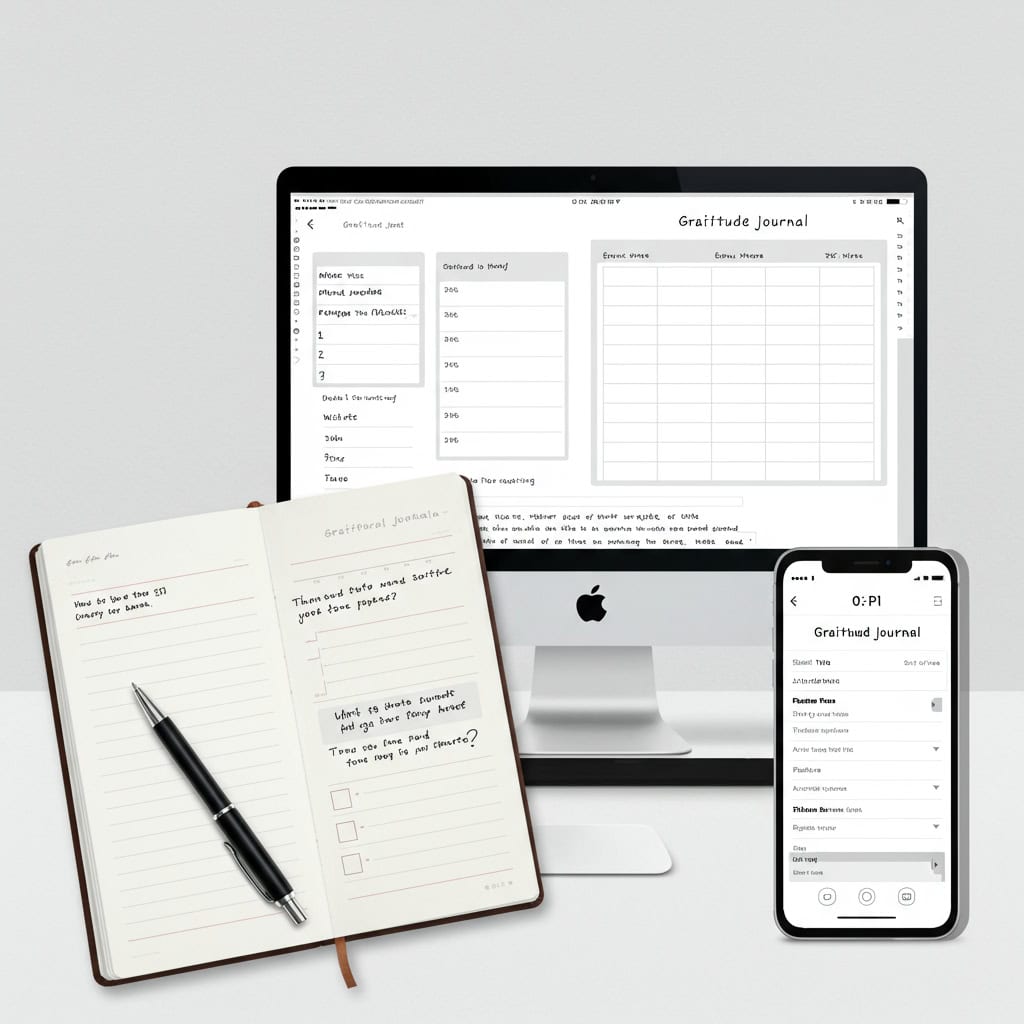Why Gratitude Journaling Improves Daily Happiness
Imagine starting each day with a sense of contentment and ending it feeling fulfilled. Gratitude journaling has been scientifically linked to increased happiness and emotional resilience, offering a simple yet transformative way to elevate your mood and mindset. This guide explores how the practice of recording what you’re thankful for can rewire your brain for positivity and well-being. Backed by research from sources like Harvard Health, you’ll discover actionable steps to create a daily gratitude journaling routine that can genuinely transform your outlook on life.
The Science Behind Gratitude Journaling

Research in positive psychology consistently shows that gratitude journaling can enhance happiness and well-being. Studies by Dr. Robert Emmons, a leading gratitude researcher, found that individuals who regularly write about things they’re thankful for experience higher levels of positive emotions and life satisfaction.
The practice helps reframe negative thoughts and builds emotional resilience. Understanding these scientific benefits can boost your motivation to keep journaling. For more on the research behind gratitude, visit Greater Good Science Center and learn how gratitude rewires your brain for positivity.
Choose Your Gratitude Journal Format

Selecting the right gratitude journal format is essential for building a sustainable habit. Whether you prefer a classic paper notebook, a structured template, or the convenience of a digital app, the best choice is the one that feels enjoyable and accessible.
Digital platforms like Grateful: A Gratitude Journal offer reminders and prompts, while physical journals can feel more personal and reflective. Experiment with different formats to find what supports your consistency and motivation. The key is to make journaling a positive and integrated part of your daily routine.
Set a Daily Journaling Routine

Creating a consistent routine is crucial for making gratitude journaling a lasting habit. Choose a specific time and place—such as first thing in the morning or before bed—to make this practice part of your daily life. Setting reminders or pairing journaling with another routine, like having your morning coffee, can help you stay on track. Regularity not only makes it easier to remember but also strengthens the positive effects over time. According to Psychology Today, daily gratitude exercises can foster enduring increases in happiness and well-being.
Focus on Specific, Positive Moments

When journaling, aim to capture specific details about positive moments or feelings from your day. Instead of general statements like “I’m grateful for my family,” describe a particular event such as “I appreciated my sister’s call that made me laugh today.” This level of detail helps you relive the joy and strengthens the emotional impact of your gratitude practice. Research from The New York Times suggests that specificity in gratitude journaling increases feelings of happiness and satisfaction, making each entry more meaningful.
Reflect and Revisit Past Entries

Regularly reviewing your previous gratitude entries can reinforce positive emotions and help you notice patterns of growth and joy in your life. Set aside time weekly or monthly to read through your journal and reflect on how far you’ve come.
This process strengthens the emotional benefits, boosts resilience during challenging times, and deepens your appreciation for small, meaningful moments. According to PositivePsychology.com, reflecting on past gratitude not only sustains happiness but also reminds you of the abundance already present in your life, supporting lasting personal well-being.
Overcome Common Gratitude Journaling Challenges

Many people face challenges such as writer’s block or simply forgetting to journal. To overcome these hurdles, keep prompts handy or use guided journals that offer daily questions. Setting digital reminders or pairing journaling with another daily habit can also boost consistency.
Remember, even brief entries are valuable—focus on quality over quantity. If you feel stuck, revisit positive moments from the past week for inspiration. For more tips on overcoming journaling obstacles, check out Verywell Mind for practical advice on building a resilient gratitude practice.
Enhance Your Practice with Mindfulness

Integrating mindfulness techniques with your gratitude journaling can significantly deepen your sense of appreciation and boost daily happiness. Take a few moments to breathe deeply and center yourself before writing, allowing you to fully experience and savor each positive moment.
Mindfulness helps you become more aware of subtle joys and present experiences, making your entries more genuine and impactful. Research from Mindful.org highlights that combining mindfulness with gratitude practices can foster greater emotional balance and a lasting, heartfelt sense of thankfulness in everyday life.
Conclusion

Gratitude journaling offers a powerful pathway to increased daily happiness, emotional resilience, and a more positive outlook on life. By understanding the science, choosing the right format, and developing a mindful, consistent routine, you can experience these transformative benefits firsthand.
Start your gratitude journaling journey today—even small daily entries can make a big difference. For further inspiration and practical tips, explore guides like TED Ideas: Why Gratitude Journaling Works. Commit to this simple practice and watch your well-being flourish with each grateful reflection.






